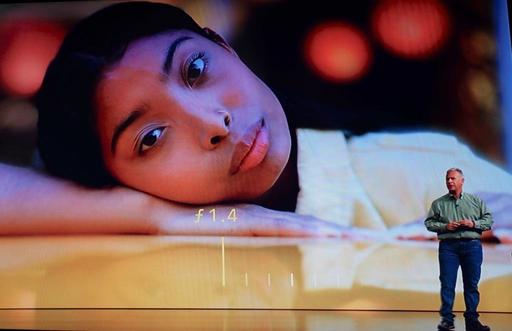This is The Digital Story Podcast #662, Nov. 20, 2018. Today's theme is "TDS Holiday Gift Guide and Stocking Stuffers." I'm Derrick Story.
Opening Monologue
Window shopping is a long standing holiday tradition. And these days our computer screen is just as much part of the experience as the storefront display. On this week's show, I have assembled a delightful gift guide and a bonus list of stocking stuffers. So make yourself a cup of cocoa and join me for our annual holiday extravaganza.
TTDS Holiday Gift Guide
- 3 Legged Thing Toolz Multi-Tool ($7.99) - The perfect stocking stuffer for every photographer - Sturdy, lightweight, cool tools, and it fits on the keychain.
- SanDisk 128GB Ultra USB 3.0 Flash Drive ($28.74) - Think about it... 128GB of fast storage for less than $30. This could be a life saver.
- Think Tank Photo Lens Case Duo 5 ($20.75) - Far and away my favorite lens case these days. Comes in green or black. Great for most mirrorless optics.
- Tenba Tool Box 8 ($37.95) - With 7.0 x 8.0 x 2.75" interior dimensions, 10 compartments, and translucent cover, this is the perfect way to stow and organize gear. Comes in different sizes too.
- Tenba BYOB 10 Camera Insert Gray ($35.08) - The gray BYOB 10 Camera Insert from Tenba is designed to carry and protect a camera and gear inside other non-camera bags including larger backpacks, suitcases or handbags. Its soft outer shell molds to the shape of a variety of carry bags. The gray BYOB 10 will hold a DSLR or mirrorless camera body with up to 4 lenses and accessories and can fit a 24-70mm f/2.8 lens attached to the camera body. Super handy!
- Olympus Fisheye Body Cap 9mm f/8 Lens ($98.72) - One of the coolest lenses in the world - 18mm (35mm Equivalent), 2 Aspherical Elements, 140° Angle of View, and Extremely Slim Body Cap Profile.
- SanDisk 500GB Extreme Portable USB 3.1 Type-C External SSD ($109.99) - Incredibly light and compact - 10 Gb/s USB 3.1 Type-C interface, which is also known as USB 3.1 Gen 2 and delivers read speeds of up to 550 MB/s. Additionally, this SSD is IP-55 rated and features resistance against water, dust, and shock. It can withstand a water flow of up to 30 kPA for 3 minutes, 1500 g of shock, and 5 gRMS of vibration @ 10-2000 Hz. I've been using one and I love it!
- Zoom H1n Digital Handy Recorder ($119.99) - The H1n is geared for musicians, journalists, podcasters, and more, recording WAV and MP3 files to meet your professional needs. The H1n has a stereo X/Y microphone configuration that captures a realistic stereo image. The unit records audio to microSD or microSDHC flash memory cards, supporting capacities up to 32GB. The H1n records WAV audio at rates up to 24-bit / 96 kHz, and MP3 audio at rates up to 320 kbps. The pocket-sized device runs on two AAA batteries, providing up to 10 hours of continuous operation. If you ever need to capture audio, this is the device for you. I use one on the road for the TDS podcast.
- Genaray Ultra-Thin Bicolor 288 SMD LED ($139) - All-Aluminum, Slim, Lightweight Design, 3200-5600K Adjustable Color Temperature, 10-100% Brightness Dimmer, 2.4 GHz Receiver for 98' Remote Control, Integrated Barndoors & Diffuser. These LED panels are so handy, from portraits to product shots. Easy to transport as well. Very nimble.
- Panasonic Lumix G 25mm f/1.7 ASPH. Lens ($148 - $100 savings) - This is a compact, fast, sharp, and versatile optic for Micro Four Thirds shooters. Every photographer should have one of these in his/her bag. What a great value!
The Portfoliobox Inspirational Photographer
I got to thinking about some of the great PortfolioBox photographers out there, and how they could inspire us both artistically, but also in terms of our presentation online. So I started digging.
Each week for the month of November, I'm going to feature an inspirational photographer who uses Portfoliobox as his/her platform for presenting their work. This week I want to point you to Detomsign. His clean, engaging fashion photography is truly engaging.
He writes about Portfoliobox, "I like that this is not only a website creation tool, it's much more than that. It's like a community of creatives which are supported by professionals like Portfoliobox. I'm always recommending everyone that Portfoliobox is the best, easy to setup and ready to go at a minute. Will be using Portfoliobox for a long time and none of the others are as good as Portfoliobox You want the best? You can't go wrong with Portfoliobox I would say."
If you've signed up for a Portfoliobox Pro account, and have published at least one page, then send me the link to that site. Use the Contact Form on the Nimble Photographer and provide your name, the link, and the subject of the page or site you've published. I will add it to our PortfolioBox Pro Directory.
To create your own Portfoliobox site, click on the tile or use this link to get started. If you upgrade to a Pro site, you'll save 20 percent off the $83 annual price.
Holiday Stocking Stuffers for Photographers
- Pedco UltraClamp Assembly Camera Mount Accessory for Cameras, Scopes, and Binoculars (1.5-Inch) ($23.47) - The Pedco UltraClamp Assembly adjustable camera mount accessory for cameras, spotting scopes, and binoculars allows for stability and flexibility in attaching an optic device to bike and motorcycle handlebars, car windows, roll bars, railings, tables and other objects and surfaces. The ball and socket head provides a wide range of angles for framing subjects, and can be quickly and easily adjusted.
- Mini Tripod Table Stand with Pads and Soft Pistol Grip for DSLR 1/4" Cameras Weighing up to 2.5lbs ($8.99) - The ZaxSound is a heavy-duty tripod, can support cameras weighing up to 2.5lbs because it has 1 support leg that is built into the tripod main frame structure, which handles all the weight. and the other 2 legs that provide stabilization to the tripod.
- Lume Cube - Bluetooth LED Light (Single - Black) ($79.99) - Proudly known as the World's Most Versatile Light™, Lume Cube represents the future of LED Lighting. Built with professional quality specs, the Lume Cube is pocket sized at 1.5 inches cubed, emits a powerful 1,500 Lumens of daylight balanced light and is waterproof to 100 feet and made with a custom lens. Diffuse, Gel or Modify the light output via the Lume Cube Light-House. Mount it to any of your devices via the built-in 1/4" 20 tripod mount on bottom. Control with manual buttons for quick adjustments or our Bluetooth App, this powerful little light can be used as a Flash (down to 1/125 of a second in Slave Mode) or constant video light.
- LensPen New DSLR Pro Camera Cleaning Kit, NDSLRK-1 ($16.75) - Digital lens, filter and compact lens cleaning kit. Safe for use on all optical devices. Kit contains miniPRO II, FilterKlear and LensPen. Patented carbon compound. Over 500 cleanings.
- Giottos AA1903 Rocket Air Blaster Large-Red ($11.99) - Large black Rocket Air Blaster easily removes dust and debris from cameras, lenses and filters with a powerful blast of air. Made of rubber. Includes a one-way valve to prevent Blaster from breathing in dust and spreading it back to your equipment.
Do You Have a Film Camera that Needs a Good Home?
Over the last year, I've received donations from TDS members who have film cameras that need a good home. What I do is inspect the items, repair and clean as I can, then list them in TheFilmCameraShop where I can find a good home for them. If you're interested in donating, please use the Contact Form on TheNimblePhotographer site. And thanks for you consideration!
Updates and Such
The 2019 TDS Workshop Season is Now Open
- We had a great response to last week's unveiling of the 2019 TDS Photography Workshop Season. Every event already has multiple deposits. If you want to join us in 2019, and I hope you do, please visit the Workshops page and find the event that's perfect for you.Inner Circle Members: Continuing this month - Photo Critique. Check out the post on Patreon. Send your images to me with the subject line, "Photo Critique." More details on our Patreon page.
B&H and Amazon tiles on www.thedigitalstory. If you click on them first, you're helping to support this podcast. And speaking of supporting this show, and big thanks to our Patreon Inner Circle members:
And finally, be sure to visit our friends at Red River Paper for all of your inkjet supply needs.
See you next week!
More Ways to Participate
Want to share photos and talk with other members in our virtual camera club? Check out our Flickr Public Group. And from those images, I choose the TDS Member Photo of the Day.
Podcast Sponsors
Red River Paper - Keep up with the world of inkjet printing, and win free paper, by liking Red River Paper on Facebook.
Portfoliobox - Your PortfolioBox site is the best way to show off your best images.
The Nimbleosity Report
Do you want to keep up with the best content from The Digital Story and The Nimble Photographer? Sign up for The Nimbleosity Report, and receive highlights twice-a-month in a single page newsletter. Be a part of our community!
Want to Comment on this Post?
You can share your thoughts at the TDS Facebook page, where I'll post this story for discussion.





















